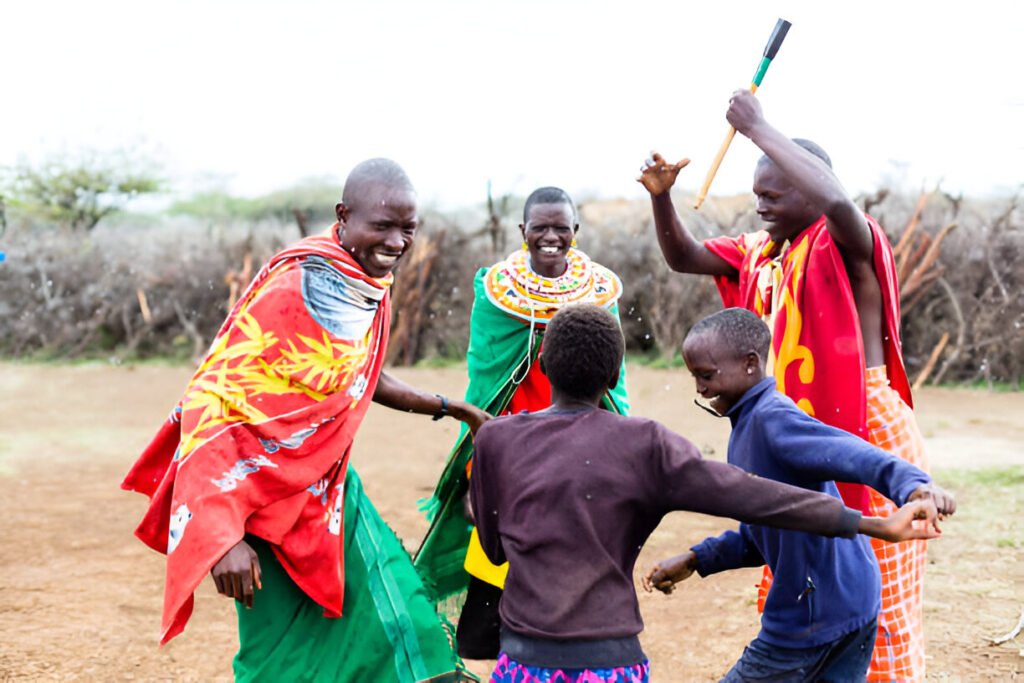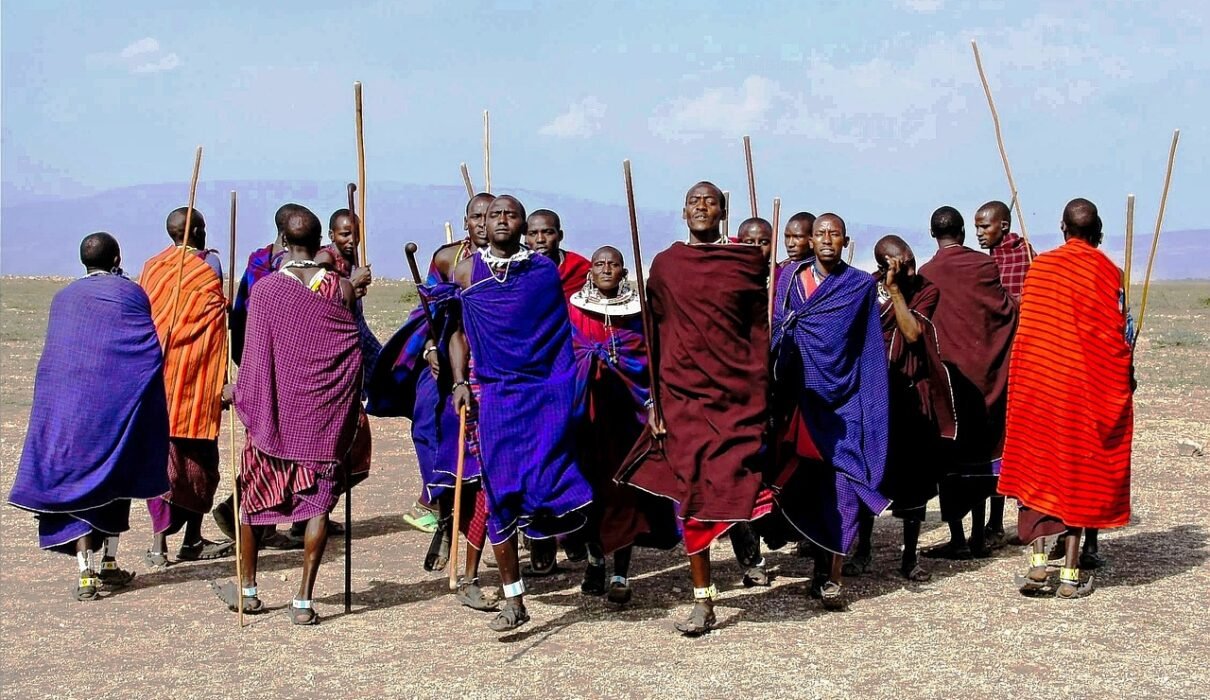Top best 10 Interesting Facts About the Maasai : The Maasai tribe is one of the most iconic and well-known indigenous groups in East Africa. Primarily living in Kenya and Tanzania, the Maasai have maintained many of their ancient traditions while coexisting with modern society. Known for their vibrant clothing, warrior culture, and deep connection to the land, the Maasai offer a unique insight into a traditional way of life that has lasted for centuries. Here are 10 interesting facts about the Maasai tribe and their rich culture.
Learn more about Maasai culture and Tanzania tours.

Top best 10 Interesting Facts About the Maasai :- The Maasai Are Semi-Nomadic Pastoralists
The Maasai people are traditionally semi-nomadic pastoralists, meaning they rely on herding cattle, sheep, and goats as their primary source of livelihood. They move frequently in search of grazing land and water for their animals, particularly in the dry seasons.
- Cattle: In Maasai culture, cattle are not only a source of food but also a symbol of wealth and social status.
Read more about the Maasai’s pastoral lifestyle
Top best 10 Interesting Facts About the Maasai :- The Maasai Have a Deep Spiritual Connection to Cattle
For the Maasai, cattle are considered sacred and are central to their spiritual and social life. According to Maasai beliefs, all cattle on Earth were given to them by Ngai (the Maasai God), and they take their responsibility as cattle herders very seriously.
- Wealth and Status: A Maasai man’s wealth is traditionally measured by the number of cattle he owns, as well as the size of his family.
Discover more about the Maasai’s relationship with cattle.
Top best 10 Interesting Facts About the Maasai :- Maasai Speak Maa as Their Native Language
The Maasai speak Maa, a Nilotic language that has been passed down through generations. While most Maasai are also fluent in Swahili (the national language of both Kenya and Tanzania) and English, Maa remains a vital part of their cultural identity.
- Language Preservation: Efforts are ongoing to preserve the Maasai language, especially in the face of modernization and global influences.
Explore more about the Maasai language and its significance.
Top best 10 Interesting Facts About the Maasai :- Maasai Villages Are Organized in Traditional Bomas
A boma is a traditional Maasai village, typically made up of a series of small, circular huts built from mud, sticks, grass, and cow dung. These huts are designed to be easily dismantled and moved as the Maasai relocate to new grazing areas.
- Boma Layout: The huts are arranged in a circle, with a central enclosure for cattle, reflecting the Maasai’s close connection to their livestock.
Learn more about Maasai village life.
Top best 10 Interesting Facts About the Maasai :- The Maasai Wear Vibrant, Colorful Shúkà Robes
One of the most distinctive aspects of Maasai culture is their traditional clothing, known as shúkà. These bright, often red, cloths are wrapped around the body and are a symbol of Maasai identity.
- Why Red?: The color red is believed to symbolize strength, bravery, and protection. It also helps scare away wild animals, especially lions, which Maasai warriors have historically hunted.
Find out more about Maasai clothing and its cultural significance.

Maasai Warriors Follow a Traditional Rite of Passage
Becoming a Maasai warrior is a key part of a young man’s life. The transition from boyhood to warrior status involves a series of rites of passage, including circumcision and, historically, lion hunting as a demonstration of courage.
- Modern-Day Warriors: While lion hunting has largely been banned due to conservation efforts, Maasai warriors still play an important role in protecting their communities and livestock.
Read about Maasai rites of passage.
The Maasai Practice Unique Jumping Dances (Adumu)
One of the most famous Maasai traditions is their Adumu, also known as the jumping dance. During ceremonies, Maasai warriors perform this dance by jumping high into the air while maintaining a straight posture. The higher a warrior can jump, the more respect he earns from his peers and the community.
- Cultural Significance: The dance is part of many celebrations, including the initiation of young men into warrior status and other important rites of passage.
Watch the Maasai jumping dance in action.
Maasai Diet Consists of Milk, Meat, and Blood
The Maasai diet traditionally consists of milk, meat, and blood from their cattle. Drinking blood, often mixed with milk, is considered a source of strength and is typically consumed during special ceremonies or when someone is sick.
- Modern Diet: While many Maasai still adhere to traditional diets, some have adopted more diverse eating habits due to changing lifestyles and access to modern food sources.
Explore more about the Maasai diet and food traditions.
Maasai Women Are Skilled Bead Artisans
Maasai women are known for their intricate beadwork, which plays an important role in their culture. Beaded jewelry, including necklaces, bracelets, and headpieces, are worn during special occasions and symbolize status, beauty, and tradition.
- Bead Colors: The colors used in the beadwork have specific meanings. For example, blue represents the sky, red symbolizes bravery, and green represents land and prosperity.
Learn about Maasai beadwork and its symbolism.
Maasai Land Overlaps with Famous Wildlife Areas
Many Maasai communities live near some of Africa’s most famous wildlife reserves, including Serengeti National Park in Tanzania and Maasai Mara in Kenya. This close proximity to wildlife has led the Maasai to play an important role in conservation efforts, balancing their traditional lifestyle with the need to protect the environment and wildlife.
- Conservation Partnerships: In recent years, the Maasai have worked alongside conservation organizations to protect wildlife habitats while maintaining their cultural practices.
Discover how the Maasai are involved in wildlife conservation.
Top best 10 Interesting Facts About the Maasai : Conclusion
The Maasai tribe remains one of the most fascinating indigenous groups in Africa, known for their rich traditions, colorful attire, and deep connection to their land and cattle. Despite the pressures of modernization, the Maasai have managed to preserve much of their culture, offering a unique glimpse into a traditional way of life that continues to thrive. Whether you are visiting Kenya or Tanzania, learning about and interacting with the Maasai is an unforgettable experience.
For personalized Maasai cultural tours and safaris, visit Kilimanjaro Climb Specialist or Eddy Tours & Safaris.

